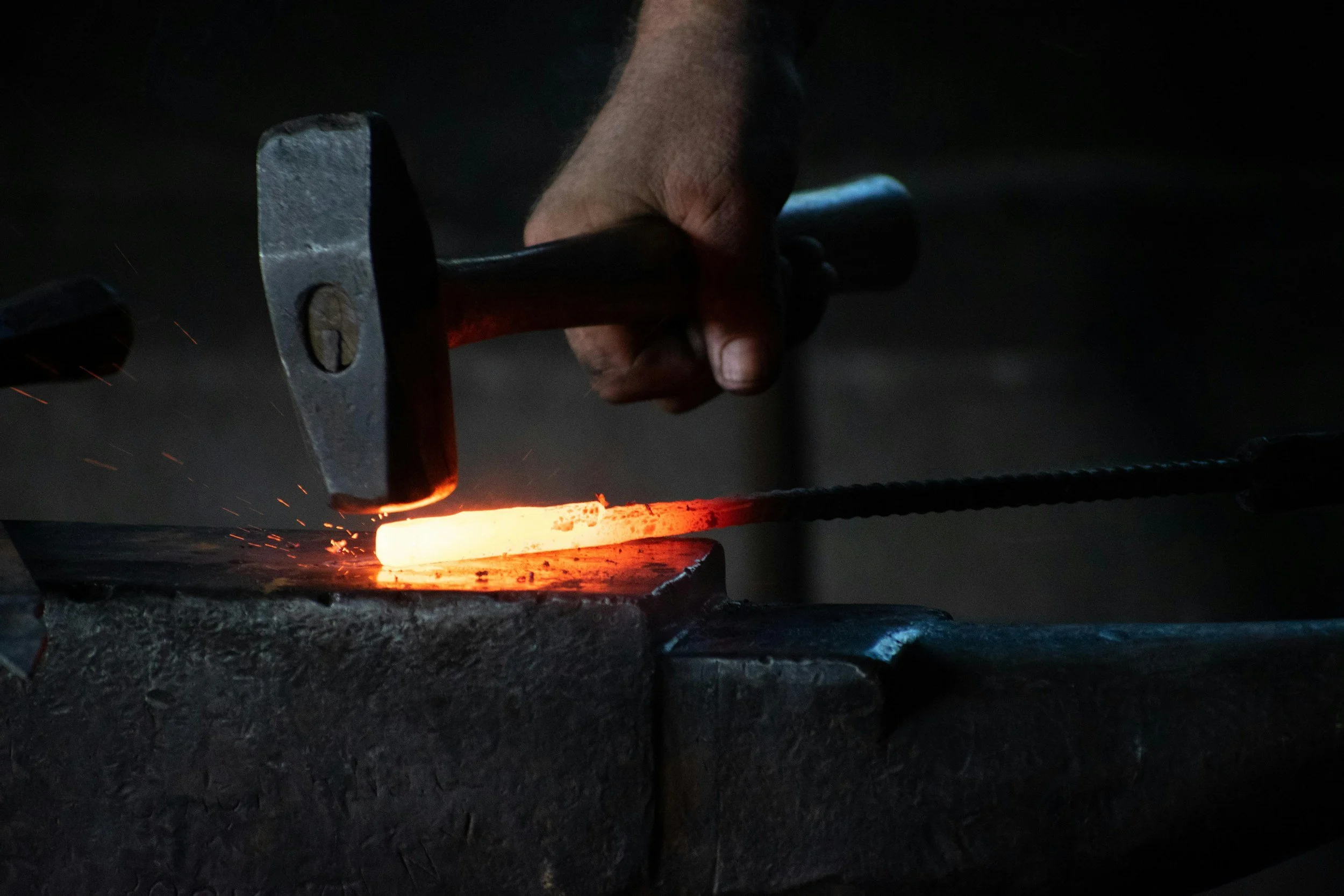The Blacksmith's Guide to Team Transformation
From Cold Steel to Flexible Teams: Ancient Lessons for Modern Leaders
Blacksmithing requires patience.
When I signed up for my first blacksmithing class, I really didn't know what I was getting into. Shaping hot metal with a hammer just sounded cool, so why the heck not.
But here's the thing—for every hard overhand smash of the metal, there are countless taps, re-firing the metal in the forge, and knowing when to stop hitting. It's quite maddening to be honest.
The amount of times you need to re-fire the iron is high, and when you think about it, it does make sense.
When you drag that hot orange metal out of the forge and place it on the anvil, it starts to cool immediately! The metal reshapes easily, but with every second ticking by, it moves less and less.
Eventually you find your flow, but here's what stuck out to me—this is a lot like trying to change ourselves and the teams we lead.
Change is tough for most people, especially unexpected abrupt change, and it's not surprising when people don't bend immediately. Just like the hot metal, there are certain things that need to be present for changes to take place.
The Heat of Transformation
Master blacksmiths know that metal's true potential emerges only under intense heat and pressure. Cold steel resists every effort to reshape it, remaining rigid and brittle. But when heated to the right temperature—glowing red-hot and malleable—even the strongest iron yields to purposeful force, taking on new forms that make it stronger and more useful than before. The experienced smith reads the subtle color changes, feeling for the precise moment when the metal becomes workable without losing its essential strength.
Your team operates under the same principles.
Teams that remain "cold"—isolated, defensive, and stuck in familiar patterns—resist transformation and crack under pressure. You can hammer away with new processes, reorganizations, and mandates, but you're likely to create fractures rather than meaningful change.
But when you create the right conditions—psychological safety, shared purpose, and genuine connection—your team becomes remarkably adaptable. They bend without breaking, reshape themselves around new challenges, and emerge stronger from the process.
Reading the Temperature
The experienced blacksmith doesn't just swing harder when metal won't move. They check the heat, adjust the fire, and wait for the right moment. You need the same sensitivity with your team.
Is your team ready for change? Look for these signs:
Trust that runs deep enough for people to be vulnerable about their struggles
Communication that flows freely without political filtering or fear
Shared commitment that burns bright enough to sustain effort through difficulty
Without these foundational elements, your change efforts will feel like hammering cold steel—lots of noise, little progress, and potential damage.
The Art of Purposeful Pressure
Once the conditions are right, change happens through purposeful, consistent pressure—not random pounding. The blacksmith shapes metal with intention, each strike building on the last, always working toward a specific form.
Your team transformations require the same thoughtful approach. Random initiatives and constant reorganizations are like wild hammer swings. But systematic development of trust, deliberate skill building, and consistent reinforcement of shared values? That's how you forge something extraordinary.
The art lies in building the foundations needed for change: creating the heat that makes transformation possible, then applying pressure with precision and patience until you've shaped something stronger than what you started with.
Is your transformation effort stuck hitting cold steel? You might need help shaping lasting change. Our programs help teams build the trust, communication, and shared commitment that make transformation possible—so your change efforts actually stick instead of just creating noise.



